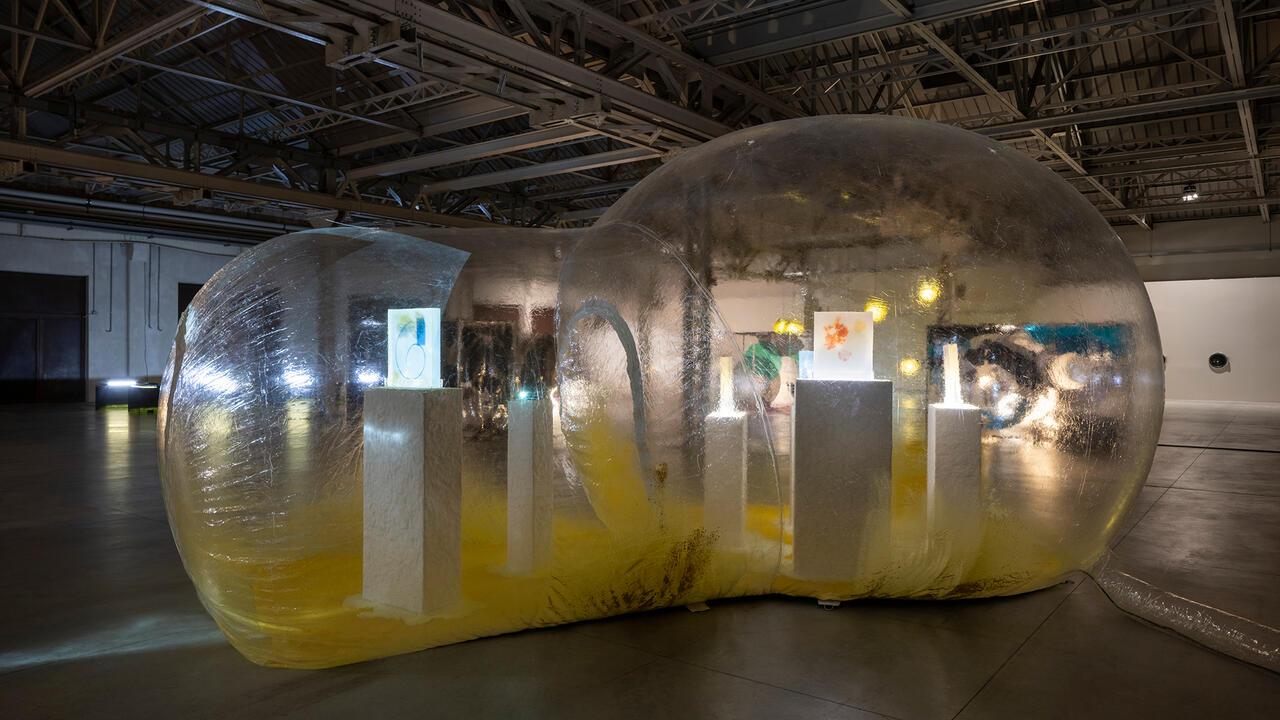Elusive Earths
établissement d'en face projects, Brussels, Belgium
établissement d'en face projects, Brussels, Belgium

The group exhibition ‘Elusive Earths’ took as its departure point a history of trade based very literally in the earth. Established in Lemnos, Greece, as early as AD 166, and gaining popularity from the end of the 13th century, pharmacists and medical practitioners produced pastilles of terra sigillata (sealed earth) in the belief that, if ingested, they could absorb toxins in the body. The clay cakes of Lemnos were authenticated by a stamped symbol of Artemis, goddess of the hunt – an image that offered occult as well as commercial significance. Production of medicinal soil eventually proliferated throughout Europe, each type stamped with its own insignia. Such manufacture ushered in counterfeits, further questioning the merits of digesting earth in the first place. In ‘Elusive Earths’, curator Jennifer Teets brought this historical curiosity to light with a group of both new commissions and adaptations of existing works. The work here referenced the contaminated and the contaminating, the dangers of qualifying the irrational and the scientific assessment of an Earth now rife with toxins.
The show itself was a multi-sensory encounter, pungent with the potent malodour of Anicka Yi’s boiling buckets of inorganic and organic materials, Convox Dialer Double Distance Of A Shining Path, Diamond Age, Cobweb (2011–14), bubbling up from the basement below. In these cauldrons, Yi reportedly placed, among other things, ‘Korean thermal clay’, ‘three pumice stones’, ‘hate crimes’, ‘female sweat’, ‘bat virus’ and ‘large chicken ribcage bones’. Upstairs, the gallery floor was covered by Jean-Marie Appriou’s square ceramic tiles, which also formed plinths upon which several sculptures of various types of sticky, oozing or burnt matter rested, including Appriou’s Bentonite Sandwich (2014) and Formation, Cristal, crotte de nez (Formation, crystal, booger) (2014; made from, among other materials, soil sourced from Lemnos), as well as Ajay Kurian’s circular, charred loafs of bread, How many faces does a coin have? (parts and wholes) 1 (2014), which recalled the historical insignia of terra sigillata.
On the opening night, Robertas Narkus performed an entrancing belly dance, a recording of which was later screened as the work DVD (2014), showing the artist’s stomach in motion, possibly digesting. Georgia Sagri’s videos, hung high and angled in the space, acted like visual songs for the chorus of codified and contaminating things below. Lorenzo Cirrincione’s poster in the gallery window, Elusive Earths: Cachet d’oculiste romain trouvé à Herleen en 1866 (Elusive Earths: Stamp of a Roman Occultist found in Herleen in 1866, 2014), advertised a talk by way of a 3D rendering of an occult stamp: the seal that certified a material’s beneficial powers for vision.
There is much discussion concerning matters of earth circulating in the art world at present. (‘The Anthropocene Project’ at the Haus der Kulturen der Welt, Berlin, in 2013–14, is a prime example.) The spectre of climate change begs for an ecological turn and casts the environment in relation to our highly networked systems, which are based largely on the exchange of material goods and our vested belief in their value. Simmering discordant and unsettled, the works in ‘Elusive Earths’ – set in relation to an ancient trade based on the medicinal attempt to absorb bodily toxins – did not assume any remedy. Rather, they embraced danger: materials can be sensory, visual and conceptual pollutants. They can also speak to the risk of assuming truths. In response to the unknown status of Earth’s material powers and its absorption of toxins, this group show advocated for an art that keeps contaminating – and keeps speculating.























